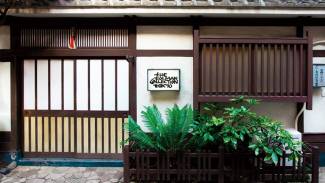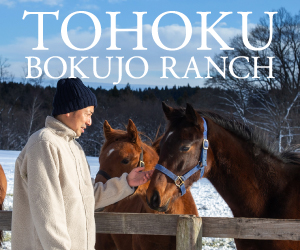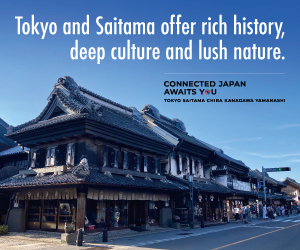OUT AND ABOUT 1
BLANKETED IN PINK AS CHERRY BLOSSOMS ARRIVE
Although Japan’s sakura (cherry blossom) season typically only lasts from late March to early May, it’s possible to enjoy the famous flowers that bloom like delicate pink clouds for almost four months. All it takes is a little traveling.
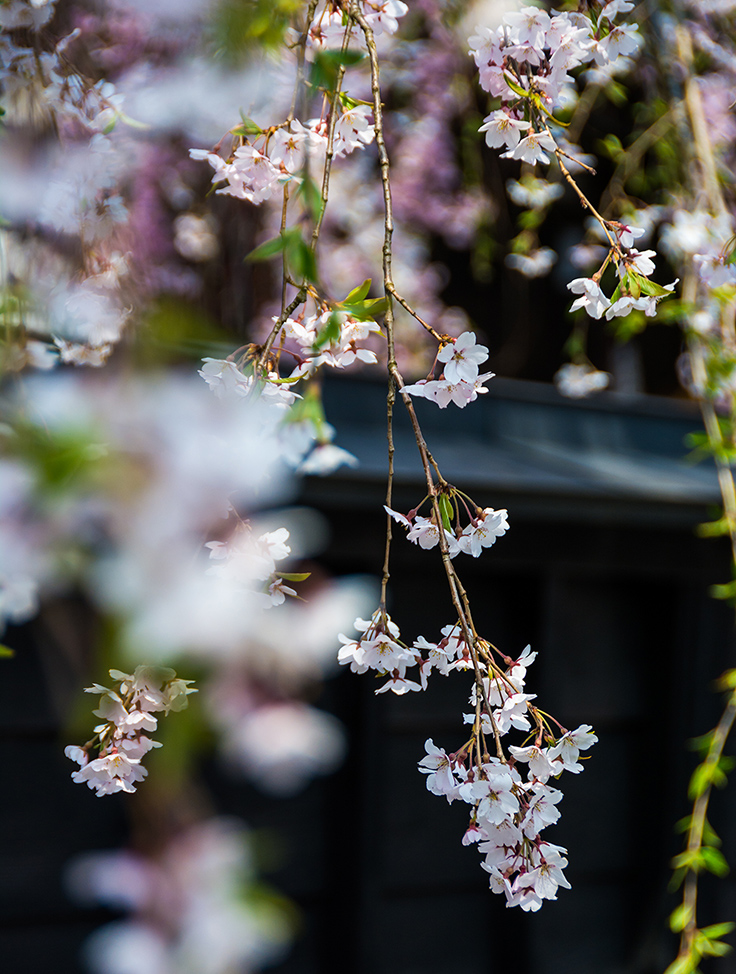
The earliest cherry blossoms appear around mid-January in Okinawa thanks to the subtropical climate, while some citizens of Hokkaido must wait well into mid-May to enjoy the sight of pink petals carpeting the country’s northernmost island. But this kind of flower-chasing never really caught on because it’d go against the spirit of hanami, which is the Japanese custom of admiring the short-lived sakura and contemplating the fleeting nature of life.
That’s not to say that the season is gloomy in any way. Far from it. The beginning of hanami isn’t just the beginning of spring, it also coincides with the start of the school year, which, over time, has made cherry blossoms symbols of hope and new beginnings.
Early spring is also a time of sakura-flavored or sakura-themed everything hitting the market, from snacks to drinks, clothing, character goods and more. The cherry blossom period might be small, but the business surrounding it is big, to the tune of ¥616 billion ($4 billion). That’s reportedly how much revenue hanami generated in 2023. This is why there are many specialized sakura forecasters scrutinizing weather data to determine when the unofficial national flower of Japan will be at its most beautiful each year.
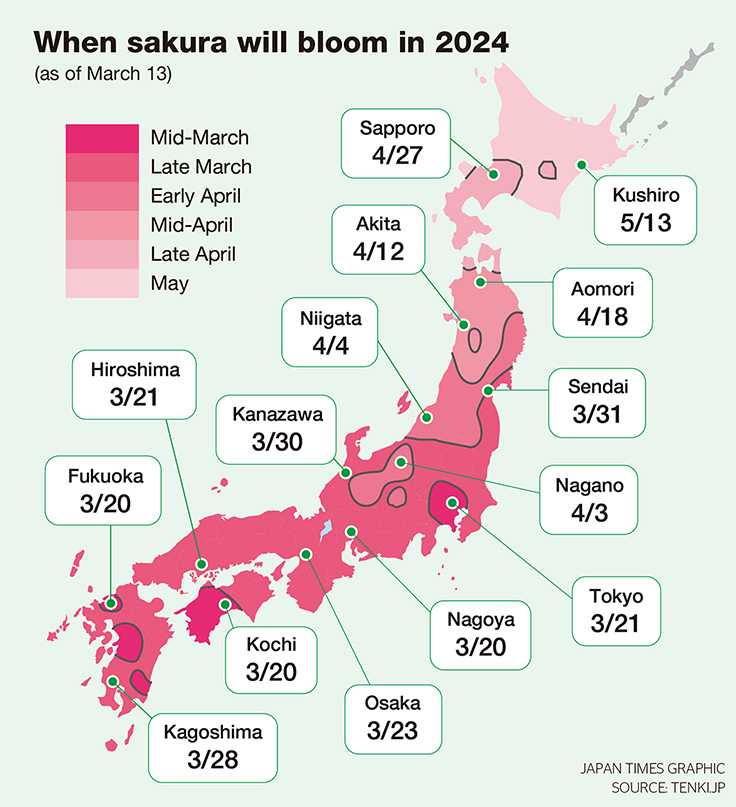
Hanami forecasts that miss the mark can not only ruin a cherry blossom-viewing holiday planned months in advance, they can also derail the massive promotional campaigns of some of the biggest employers in Japan. Unsurprisingly, many Japanese have their preferred source for sakura-related updates that they follow more passionately than news of popular entertainers. Because, ultimately, that’s what cherry blossoms are in Japan — celebrities, only more precious because they are seasonal.
In a world where we can get almost any commodity or experience at any time of year, there is something magical about having to wait for a specific, immovable and inimitable period to enjoy some of the most scenic sites in Japan. The following are two recommended locations for those who want to make the most out of this year’s hanami season.
Kakunodate samurai residences
Bright colors appear even more vivid against dark backgrounds. That’s one of the reasons why the Kakunodate area of Semboku, Akita Prefecture, has become such a popular hanami spot, attracting visitors with the mesmerizing contrast between soft pink cherry blossoms and the black walls of the district’s exquisitely preserved samurai residences.
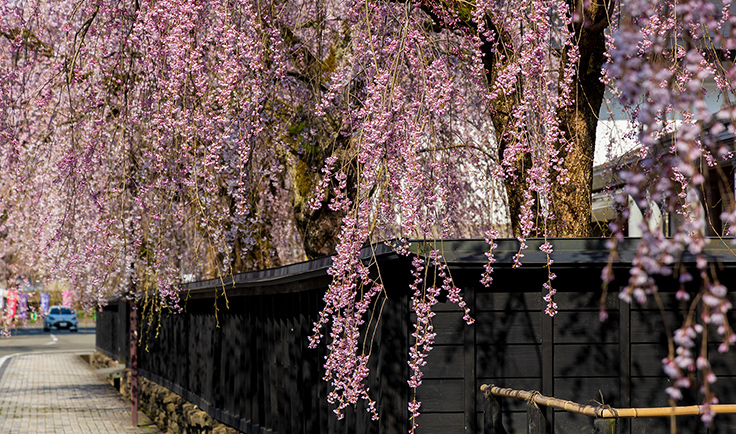
Once a prosperous castle town, Kakunodate retains the spirit of the Edo Period (1603 to 1868) with its historic townscape featuring mansions of great samurai families, as well as 400 weeping cherry trees, 162 of which have been designated as National Natural Monuments. Because of the classic architecture of the houses and the popularity of weeping cherries in Japan’s former capital, Kakunodate has come to be known as the “Little Kyoto of Tohoku” (the name for Japan’s Northeast). The local sakura can trace their lineage directly to the 1,000-year-old city of Kyoto, from where they were imported as a wedding gift over 360 years ago. Mixing centuries-long history with the splendor of nature, Kakunodate more than earns its reputation as one of Japan’s premier hanami spots.
Best time to visit: Late April to early May
Access: 20-minute walk from JR Kakunodate Station
Address: Between Omotemachi Kami-cho and Higashikatsuraku-cho, Kakunodate-machi, Semboku-shi, Akita Pref.
URL: https://www.tohokukanko.jp/en/attractions/detail_1203.html
Hirosaki Park
Hirosaki Park in Aomori Prefecture is centered around Hirosaki Castle, a rare example of a historic fortification that has been preserved in its original form through the centuries since its construction in 1611.
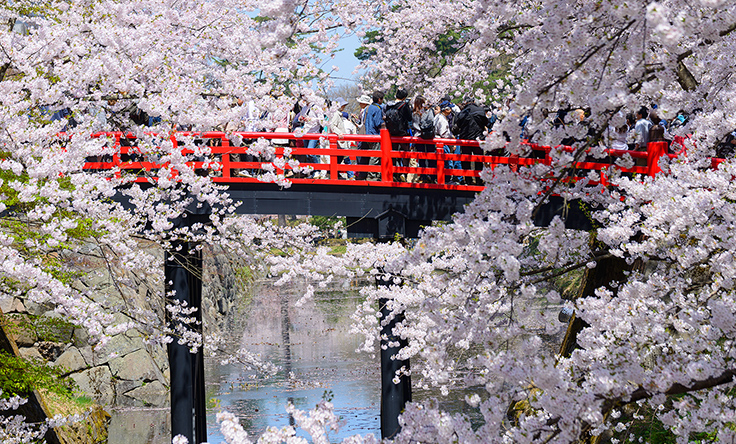
A popular relaxation spot adored by local residents, Hirosaki Park becomes a national destination during hanami season because of its 2,600 cherry trees spanning 52 varieties, earning it the designation of “one of the three most famous cherry blossom viewing spots in Japan.”
Highlights of Hirosaki Park include the “heart sakura,” where the branches of two different trees come together to form a heart shape, and a sakura tunnel created by the colorful trees lining the banks of the castle moat, which visitors can explore via boat.
Visitors will find that the park is especially enchanting at night when the area is illuminated, transporting guests to a colorful land of whimsy and magic. Incidentally, in recent years Hirosaki Park has also become popular among anime fans after it was discovered that a 500-year-old tree there happens to be named Nezuko, the same name as the heroine of the popular fantasy manga and anime “Demon Slayer” (“Kimetsu no Yaiba”).
Best time to visit: Late April to early May
Access: 30-minute walk from JR Hirosaki Station
Address: 1 Shimoshirogane-cho, Hirosaki-shi, Aomori Pref.
URL: https://www.hirosaki-kanko.or.jp/en/



